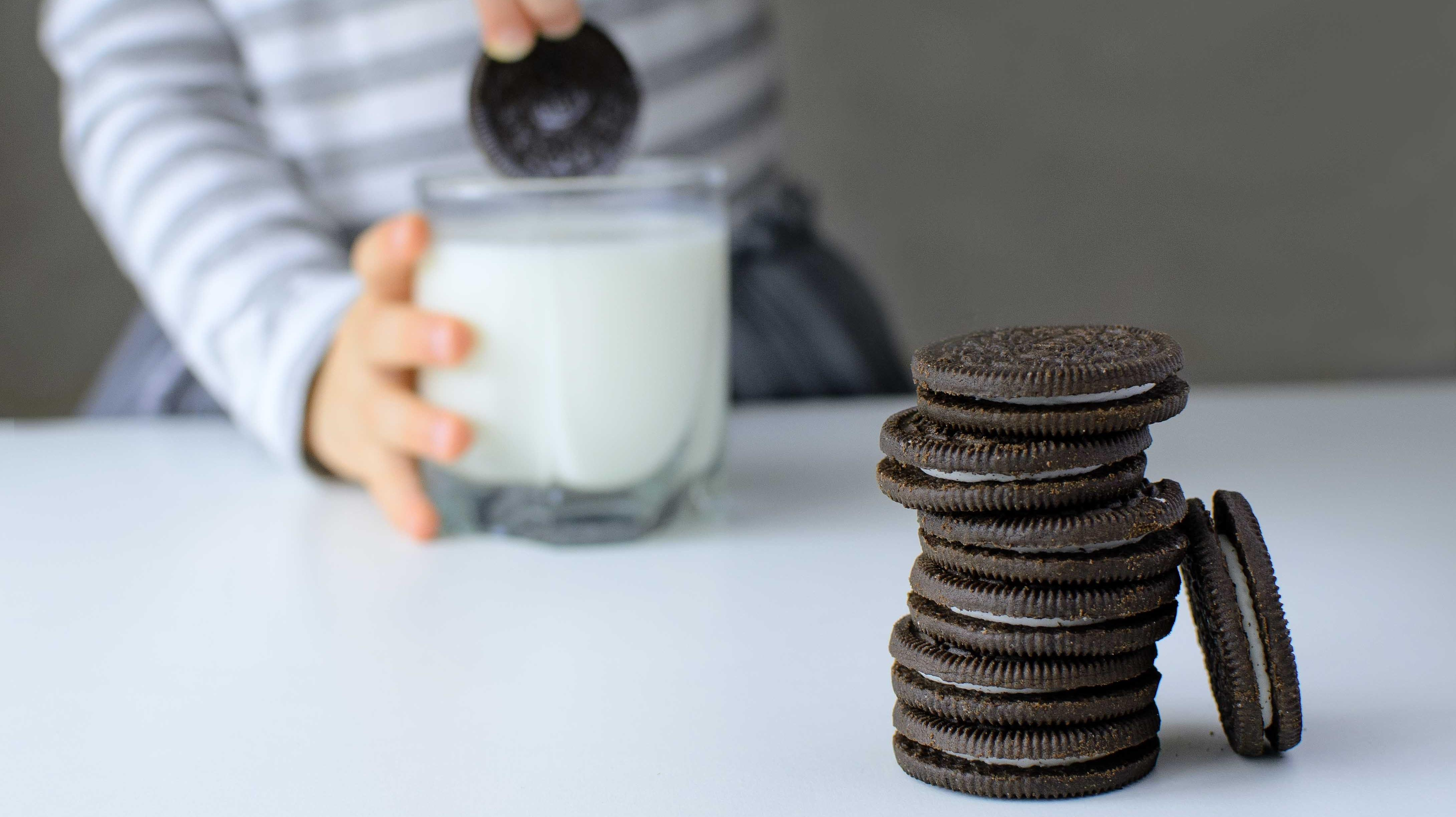Oreos Baffle Researchers, Challenge The Laws Of Physics
The science of twisting Oreos appears to be beyond human comprehension.
Oreos are the absolute best cookie for people who like fidgeting with their food. You can dunk them in milk, which creates that delightful melt-away texture when you eat them. Or you can twist the cookie open so as to savor each creme-topped half in turn. Both are great options, but it's the latter approach that has scientists baffled.
When you twist open an Oreo, you've probably noticed that the creme mostly stays with one side of the sandwich cookie, leaving you with a plain chocolate wafer in one hand. Crystal Owens, a Ph.D. candidate in MIT's mechanical engineering department, looked into exactly why this happens, and the Wall Street Journal reports that there's much more to this cookie-twisting phenomenon than you might think.
Why does the creme only stick to one side of the Oreo?
As part of her study, Owens employed the use of a rheometer, an instrument with two counter-rotating metal plates, to measure how Oreo creme would react to twisting forces, aka torsion. After using the rheometer to twist open more than 1,000 Oreos, Owens' research team found that the creme inexplicably stuck to one side about 80% of the time.
Curiously, other materials, such as ice cream and toothpaste, would split evenly down the middle when torsion was applied. In the case of Oreos, the speed of the twisting didn't seem to influence the outcome; at the slowest speed, which takes about five whole minutes to complete, the creme still stuck to one side. When the rheometer was run at max speed, which is over 100 times the speed a human can manually twist an Oreo, the creme just flew off the cookie entirely.
The findings suggest that the creme is stronger than it is sticky, meaning it would be more likely to peel off an Oreo entirely than to tear. The research team has a theory that whichever side the creme is initially applied to has a stronger bond with the filling. This part is me just thinking out loud, but I wonder if the temperature of the creme being applied to the cookies has an impact on that bond as well.
After Owens' findings were published in April 2022, a physicist at University of Groningen in the Netherlands had students try twisting their own Oreos in a replication of the experiment. Surprisingly, their results were much different: The students' efforts yielded a pretty even split of creme on each wafer, which suggests that the European formula for an Oreo isn't the same as the one used in the United States. (European friends, please send us 1,000 Oreos so we can find out. You know, for science.)
Who knew that Oreos could present such a conundrum to scientists? There's no doubt further insight to be gleaned as to why this imperfect cookie-twisting happens, but Owens has already accomplished something significant with this research: By presenting physics and engineering in the context of an Oreo, it makes these concepts more accessible to the general public.
This study certainly has my attention. Next time I buy a package of Oreos, expect to see me twisting them open one by one before eating them. You know, for science.
